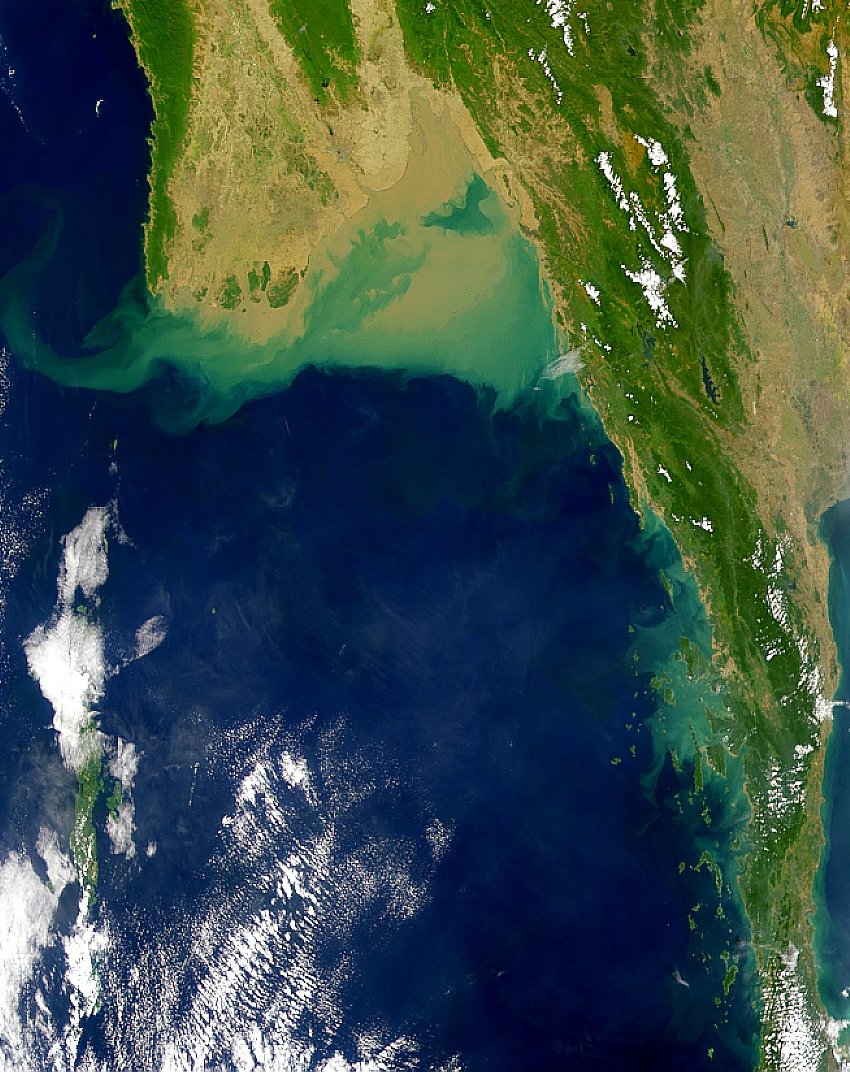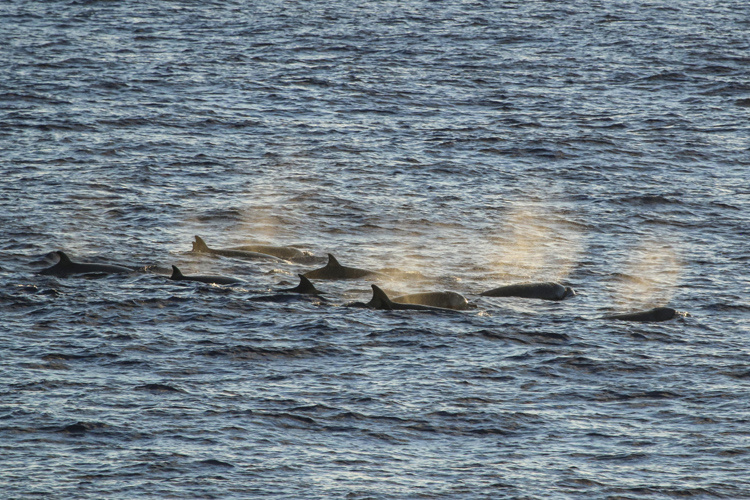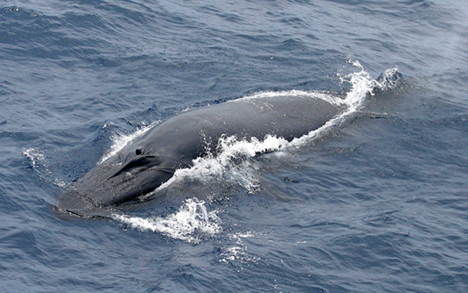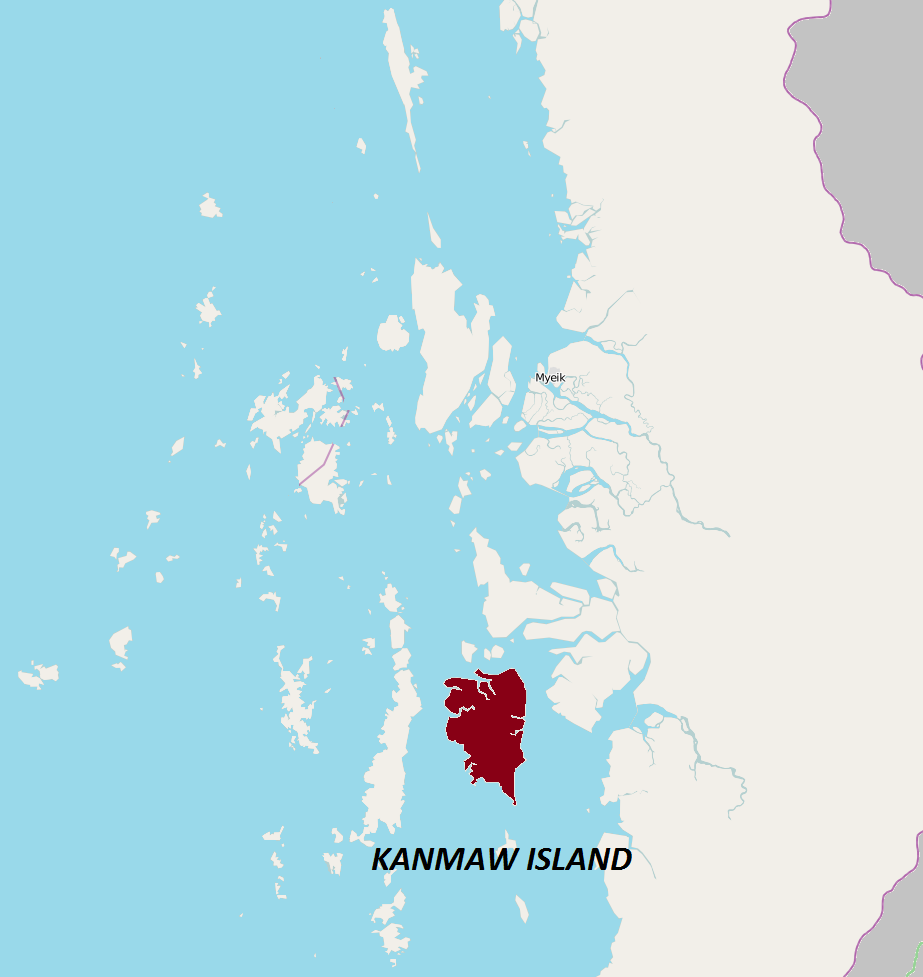|
Mergui Archipelago
The Mergui Archipelago (also Myeik Archipelago or ''Myeik Kyunzu''; ) is located in far southern Myanmar (Burma) and is part of the Tanintharyi Region. It consists of around 800 islands, varying in size from very small to hundreds of square kilometres, all lying in the Andaman Sea off the western shore of the Malay Peninsula near its landward (northern) end where it joins the rest of Indochina. They are occasionally referred to as the Pashu Islands because the Malay inhabitants are locally called ''Pashu''. Environment Geologically, the islands are characterized mainly by limestone and granite. They are generally covered with thick tropical growth, including rainforest, and their shorelines are punctuated by beaches, rocky headlands, and in some places, mangrove swamps. Offshore are extensive coral reefs. The archipelago's virtual isolation from most of mankind's influence on the natural environment has given the islands and the surrounding waters of the Andaman Sea a great ... [...More Info...] [...Related Items...] OR: [Wikipedia] [Google] [Baidu] |
Andaman Sea
The Andaman Sea (historically also known as the Burma Sea) is a marginal sea of the northeastern Indian Ocean bounded by the coastlines of Myanmar and Thailand along the Gulf of Martaban and the west side of the Malay Peninsula, and separated from the Bay of Bengal to its west by the Andaman Islands and the Nicobar Islands. Its southern end is at Breueh Island just north of Sumatra, with the Strait of Malacca further southeast. Traditionally, the sea has been used for fishery and transportation of goods between the coastal countries and its coral reefs and islands, which are popular tourist destinations. The fishery and tourist infrastructure was severely damaged by the December 2004 Indian Ocean earthquake and tsunami. Geography Location The Andaman Sea, which extends over 92°E to 100°E and 4°N to 20°N, occupies a very significant position in the Indian Ocean, yet remained unexplored for a long period. To the south of Myanmar, west of Thailand, and north of Indonesia, t ... [...More Info...] [...Related Items...] OR: [Wikipedia] [Google] [Baidu] |
Fauna (animals)
Fauna (: faunae or faunas) is all of the animal life present in a particular region or time. The corresponding terms for plants and fungi are ''flora'' and '' funga'', respectively. Flora, fauna, funga and other forms of life are collectively referred to as '' biota''. Zoologists and paleontologists use ''fauna'' to refer to a typical collection of animals found in a specific time or place, e.g. the " Sonoran Desert fauna" or the " Burgess Shale fauna". Paleontologists sometimes refer to a sequence of faunal stages, which is a series of rocks all containing similar fossils. The study of animals of a particular region is called faunistics. Etymology ''Fauna'' comes from the name Fauna, a Roman goddess of earth and fertility, the Roman god Faunus, and the related forest spirits called Fauns. All three words are cognates of the name of the Greek god Pan, and ''panis'' is the Modern Greek equivalent of fauna (πανίς or rather πανίδα). ''Fauna'' is also the word for a ... [...More Info...] [...Related Items...] OR: [Wikipedia] [Google] [Baidu] |
Dolphin
A dolphin is an aquatic mammal in the cetacean clade Odontoceti (toothed whale). Dolphins belong to the families Delphinidae (the oceanic dolphins), Platanistidae (the Indian river dolphins), Iniidae (the New World river dolphins), Pontoporiidae (the brackish dolphins), and possibly extinct Lipotidae (baiji or Chinese river dolphin). There are 40 extant species named as dolphins. Dolphins range in size from the and Maui's dolphin to the and orca. Various species of dolphins exhibit sexual dimorphism where the males are larger than females. They have streamlined bodies and two limbs that are modified into flippers. Though not quite as flexible as Pinniped, seals, they are faster; some dolphins can briefly travel at speeds of or leap about . Dolphins use their conical teeth to capture fast-moving Predation, prey. They have well-developed hearing which is adapted for both air and water; it is so well developed that some can survive even if they are blind. Some species are w ... [...More Info...] [...Related Items...] OR: [Wikipedia] [Google] [Baidu] |
Killer Whale
The orca (''Orcinus orca''), or killer whale, is a toothed whale and the largest member of the oceanic dolphin family. The only extant species in the genus '' Orcinus'', it is recognizable by its black-and-white-patterned body. A cosmopolitan species, it inhabits a wide range of marine environments, from Arctic to Antarctic regions to tropical seas. Orcas are apex predators with a diverse diet. Individual populations often specialize in particular types of prey, including fish, sharks, rays, and marine mammals such as seals, dolphins, and whales. They are highly social, with some populations forming stable matrilineal family groups (pods). Their sophisticated hunting techniques and vocal behaviors, often unique to specific groups and passed down from generation to generation, are considered to be manifestations of animal culture. The International Union for Conservation of Nature (IUCN) lists the orca's conservation status as data deficient as multiple orca types may re ... [...More Info...] [...Related Items...] OR: [Wikipedia] [Google] [Baidu] |
Strap-toothed Whale
The strap-toothed beaked whale (''Mesoplodon layardii''), also known as Layard's beaked whale, is one of the largest members of the ''Mesoplodon'' genus, growing to in length and reaching up to . The common and scientific name was given in honor of Edgar Leopold Layard, the curator of the South African Museum, who prepared drawings of a skull and sent them to the British taxonomist John Edward Gray, who described the species in 1865. Description Adult strap-toothed beaked whales show a distinctive colouration that perhaps makes them one of the most readily distinguishable beaked whale species. Adults have a white beak, with a pale white 'cape' that extends to halfway between the dorsal fin and head. The dorsal fin is set far back down the body and is white-tipped. The flukes also have white tips. When observed closely, either at sea or when stranded, these whales show a pale neckband that separates the darker grey colouration found upon the head and melon from the rest of the b ... [...More Info...] [...Related Items...] OR: [Wikipedia] [Google] [Baidu] |
Longman's Beaked Whale
The tropical bottlenose whale (''Indopacetus pacificus''), also known as the Indo-Pacific beaked whale or Longman's beaked whale, was considered to be the world's rarest cetacean until recently, but the spade-toothed whale now holds that position. As of 2010, the species is now known from nearly a dozen strandings and over 65 sightings. This is the only species in the genus ''Indopacetus''. History of discovery The species has had a long history riddled with misidentifications, which are now mostly resolved. A skull and jaw found on a beach in Mackay, Queensland, in 1882, provided the basis for the initial description of this species by H. A. Longman in 1926. Other researchers were not convinced, and felt this specimen might instead represent a Pacific form of True's beaked whale or a female bottlenose whale. Almost 30 years after Longman's original publication, a second skull was discovered near Danane, Somalia (1955). This specimen likely stranded on the coast, but was subsequ ... [...More Info...] [...Related Items...] OR: [Wikipedia] [Google] [Baidu] |
Blue Whale
The blue whale (''Balaenoptera musculus'') is a marine mammal and a baleen whale. Reaching a maximum confirmed length of and weighing up to , it is the largest animal known ever to have existed. The blue whale's long and slender body can be of various shades of greyish-blue on its upper surface and somewhat lighter underneath. Four subspecies are recognized: ''B. m. musculus'' in the North Atlantic and North Pacific, ''B. m. intermedia'' in the Southern Ocean, ''B. m. brevicauda'' (the pygmy blue whale) in the Indian Ocean and South Pacific Ocean, and ''B. m. indica'' in the Northern Indian Ocean. There is a population in the waters off Chile that may constitute a fifth subspecies. In general, blue whale populations migrate between their summer feeding areas near the poles and their winter breeding grounds near the tropics. There is also evidence of year-round residencies, and partial or age/sex-based migration. Blue whales are filter feeders; their diet consists almost ... [...More Info...] [...Related Items...] OR: [Wikipedia] [Google] [Baidu] |
Bryde's Whale
Bryde's whale ( ), or the Bryde's whale complex, putatively comprises three species of rorqual and possibly four. The "complex" means the number and classification remain unclear because of a lack of definitive information and research. The common Bryde's whale (''Balaenoptera brydei'', Olsen, 1913) is a larger form that occurs worldwide in warm temperate and tropical waters, and the Sittang or Eden's whale (''Balaenoptera edeni'', Anderson, 1879) is a smaller form that may be restricted to the Indo-Pacific. Also, a smaller, coastal form of ''B. brydei'' is found off southern Africa, and perhaps another form in the Indo-Pacific differs in skull morphology, tentatively referred to as the Indo-Pacific Bryde's whale. The recently described Omura's whale (''B. omurai'', Wada et al. 2003), was formerly thought to be a pygmy form of Bryde's, but is now recognized as a distinct species. Rice's whale (''B. ricei''), which makes its home solely in the Gulf of Mexico, was once consider ... [...More Info...] [...Related Items...] OR: [Wikipedia] [Google] [Baidu] |
Kanmaw Kyun
Kanmaw Kyun or Kanmaw Island is an island in the Andaman Sea along the coast of southeastern Burma (Myanmar), and is part of the Mergui Archipelago. Administratively, it is located in Kyunsu Township, Myeik District, in the Taninthayi Region. On the northeastern side of the island is the town of Kyunsu, which is the administrative seat for the township. The island covers a total area of . Etymology Under the British, the island was known as Kisseraing Island,Hydrographic Office (1916) ''Bay of Bengal Pilot: Bay of Bengal and the Coasts of India and Siam, including the Nicobar and Andaman Islands'' US Navy, Government Printing Office, Washington, D.C.page 432 "Burma 1:250,000 topographic map, Series U542, Bokpyin NC 47-2" U.S. Army Map Service, July 1960 Kitharen ... [...More Info...] [...Related Items...] OR: [Wikipedia] [Google] [Baidu] |
Wildlife Conservation Society
The Wildlife Conservation Society (WCS) is a global 501(c)(3) organization, 501(c)(3) non-governmental organization, headquartered at the Bronx Zoo in New York City, with a mission to save "wildlife and wild places across the globe". Founded in 1895 as the New York Zoölogical Society (NYZS), the global conservation organization is, as of April 2, 2024, led by Interim President and CEO Robb Menzi. WCS manages four New York City wildlife parks in addition to the Bronx Zoo: the Central Park Zoo, New York Aquarium, Prospect Park Zoo, and Queens Zoo. Together, these parks receive 4 million visitors per year."About Us" ''WCS.org'', accessed 23 November 2020 All these facilities are accredited by the Association of Zoos and Aquariums (AZA). WCS has a global program doing conservation work on the ground in more than 50 countries. [...More Info...] [...Related Items...] OR: [Wikipedia] [Google] [Baidu] |
Cetaceans
Cetacea (; , ) is an infraorder of aquatic mammals belonging to the order Artiodactyla that includes whales, dolphins and porpoises. Key characteristics are their fully aquatic lifestyle, streamlined body shape, often large size and exclusively carnivorous diet. They propel themselves through the water with powerful up-and-down movements of their tail, which ends in a paddle-like fluke, using their flipper-shaped forelimbs to steer. While the majority of cetaceans live in marine environments, a small number reside solely in brackish water, brackish or fresh water. Having a cosmopolitan distribution, they can be found in some rivers and all of Earth's oceans, and many species migrate throughout vast ranges with the changing of the seasons. Cetaceans are famous for cetacean intelligence, their high intelligence, complex social behaviour, and the enormous size of some of the group's members. For example, the blue whale reaches a maximum confirmed length of and a weight of 173 tonne ... [...More Info...] [...Related Items...] OR: [Wikipedia] [Google] [Baidu] |
ResearchGate
ResearchGate is a European commercial social networking site for scientists and researchers to share papers, ask and answer questions, and find collaborators. According to a 2014 study by ''Nature'' and a 2016 article in ''Times Higher Education'', it is the largest academic social network in terms of active users, although other services have more registered users, and a 2015–2016 survey suggests that almost as many academics have Google Scholar profiles. While reading articles does not require registration, people who wish to become site members need to have an email address at a recognized institution or to be manually confirmed as a published researcher in order to sign up for an account. Articles are free to read by visitors, however additional features (such as job postings or advertisements) are accessible only as a paid subscription. Members of the site each have a user profile and can upload research output including papers, data, chapters, negative results, patents, r ... [...More Info...] [...Related Items...] OR: [Wikipedia] [Google] [Baidu] |








